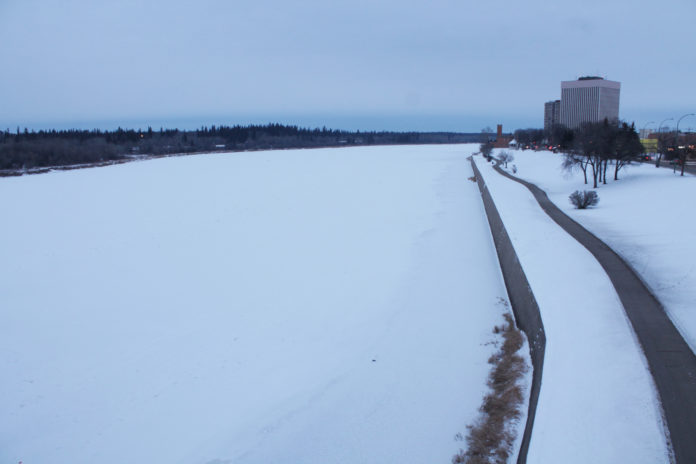
Rapidly warming temperatures could lead to flooding and ice jamming along the North Saskatchewan River, the province warned Monday.
The Water Security Agency (SWSA) said the risk runs from the Alberta border to forks where the North and South Saskatchewan River meet, downstream (East) of Prince Albert.
The WSA said that the late snowmelt runoff is increasing risks of a rapid warm-up and melt, and a potential for higher runoff than anticipated.
Some localized flooding and ice jamming on smaller streams and rivers could occur. The highest risk is in the central part of the province, from Highway 16 north to the Churchill River, a region that includes Prince Albert, La Ronge and surrounding areas.
Up north at the Churchill River, late winter snowfall was “significant” and minimal melting has occurred so far.
“Residents along the North Saskatchewan and Saskatchewan Rivers are advised to be aware of this event and the potential impacts to property, like irrigation pumps and related equipment, along the river,” the WSA wrote.
The public should also be cautious, especially around the river, as ice jams can result in rapid changes in water levels.
“Under no circumstances should anyone venture out onto an ice jam,” The WSA said.
“While spring ice jamming is not uncommon along the North Saskatchewan River, the lateness of this year’s snowmelt runoff within the basin increases the risk of a rapid melt and a simultaneous breakup of the ice cover.”
A near-simultaneous breakup of river ice, as opposed to staggering breakups, may mean a more significant event. While the timing and magnitude of this are hard to predict, ice fams tend to occur at the same locations each year. The WSA said conditions are similar to ice jamming incidents seen in 2013.
A “significant increase” in flows along the Saskatchewan River, resulting in increases in water levels at Codette and Tobin lakes and large increases at the Nipawin and E.B. Campbell Dams are also expected.

